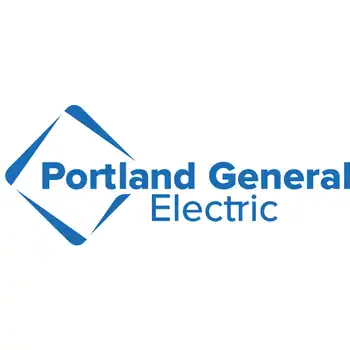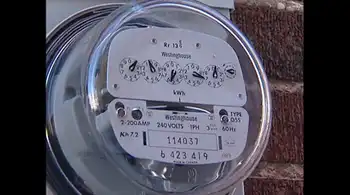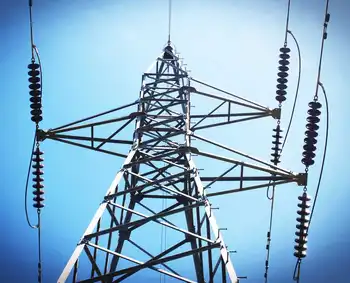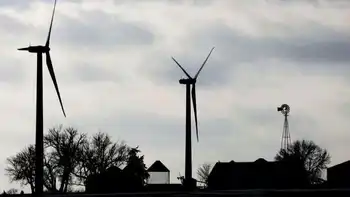A bid to cut emissions looks away from coal
By New York Times
CSA Z462 Arc Flash Training - Electrical Safety Essentials
Our customized live online or in‑person group training can be delivered to your staff at your location.

- Live Online
- 6 hours Instructor-led
- Group Training Available
The nation's first project for capturing and separating carbon dioxide from a coal plant began October 1 at American Electric Power's coal-fired plant in West Virginia.
But coal-fired power plants, commonly identified as the nationÂ’s biggest emissions villain, may not be the best focus.
Rather, engineers and policymakers say, it may be easier and less costly to capture the carbon dioxide at oil refineries, chemical plants, cement factories and ethanol plants, which emit a far purer stream of it than a coal smokestack does.
Carbon dioxide typically makes up only 10 percent to 12 percent of a coal plantÂ’s emissions, they note, and the gas is so mixed with pollutants that it is difficult to separate.
Cheaper strategies for sequestering carbon dioxide could prove especially important if Congress passes a law setting up a so-called cap-and-trade system. That would set a national ceiling for overall emissions and allot pollution allowances to utilities, manufacturers and other emitters, which could then trade them among themselves.
Companies that exceed their carbon dioxide emission allowances could buy credits from those that pollute less. Under such a system, a coal plant that had exceeded its allotment might pay a chemical plant that could separate a ton of carbon dioxide more cheaply.
“If we have a cap-and-trade scheme, it will happen wherever it is the most cost-effective,” said Jeffrey R. Holmstead, a lawyer and former assistant administrator for air and radiation at the Environmental Protection Agency.
Lending momentum to this thinking, a Texas company, Denbury Resources, is building a 320-mile pipeline for carbon dioxide that will run from Louisiana to Houston.
Initially the pipeline will take natural underground deposits of carbon dioxide in Mississippi to the aging oil fields of east Texas, where it can be used to force more oil to the surface.
But as the pipeline threads its way through more and more refineries and plants — the chemical heartland of the United States — manmade carbon dioxide captured at those sites could also be added and stored.
Sequestering a ton of carbon dioxide from a chemical plant would have the same effect on the EarthÂ’s atmosphere as storing a ton from a coal plant, scientists and industry executives emphasize.
“Sequestration is not a coal technology — it is a greenhouse gas abatement strategy,” said S. Julio Friedmann, leader of the carbon management program at Lawrence Livermore National Laboratory.
Last month, the Energy Department announced $44 million in grants to develop the technology, known generally as carbon capture.
Among them was $1.72 million for Praxair, a chemical company based in Connecticut that operates two plants near Houston that make hydrogen for use in oil refineries.
The money will go toward developing engineering studies on how to capture carbon dioxide from the hydrogen production and deliver it to Denbury.
Carbon dioxide makes up 20 percent of the gas resulting from hydrogen production, twice the concentration found in a gas stream from a typical coal plant. Recovering it from this stream rather than a coal plant smokestack would therefore be cheaper and simpler.
In the oil industry, drillers have for years tapped underground reservoirs of carbon dioxide, brought it to the surface and moved it by pipeline to oil fields. Then they inject it into the fields to help force oil to the surface in a process called “enhanced oil recovery.”
If the oil industry left the natural carbon dioxide where it was, and drew on carbon dioxide from industrial plants instead, far less manmade carbon dioxide would enter the atmosphere, experts say.
What oil drillers pay for carbon dioxide depends on the value of the oil it will help produce. When oil is at $70 a barrel, carbon dioxide goes for $10 or $11 a ton, said Tracy Evans, the chief executive of Denbury, the Texas company building the carbon dioxide pipeline.
Should the Congressional legislation mandate a cap-and-trade system, that modest price could be very important. “Wherever you can go to store a ton of carbon the most cheaply, you will go,” said Mr. Holmstead, the former E.P.A. administrator for air.
Another likely source of pure streams of carbon dioxide are plants that refine natural gas. The natural gas usually comes out of the ground mixed with carbon dioxide, which natural gas sellers routinely remove so the natural gas can be considered “pipeline quality.” That carbon dioxide is sometimes reinjected into the ground, but sometimes vented.
Then there are cement kilns, which produce a nearly pure stream of carbon dioxide.
For now, no one is sure what it will cost to capture and sequester carbon dioxide from coal plants because the first such project in the nation, at American Electric PowerÂ’s coal-fired plant in New Haven, W.Va., got under way only last month. At the moment, the process consumes 30 percent of the coal plantÂ’s energy, but engineers are working to cut that in half.
Even so, experts expect the price to run to $60 a ton or more. But pure streams could be captured for the cost of drilling a natural gas well and compressing the gas into liquid form — perhaps $10 to $15 a ton, Dr. Friedmann of the Livermore laboratory said.
Bruce Nilles, director of the National Coal Campaign at the Sierra Club, also cites natural gas plants as a promising avenue for carbon capture. Natural gas has only half as much carbon dioxide in it as coal does. So the equipment needed to separate and sequester the carbon dioxide at a gas plant would be half as big as the machinery at a coal plant of the same size, and would cost less to build and operate.
Mr. Nilles and others say that biomass fuels, derived from wood, waste and alcohol, could offer an even better opportunity for carbon capture. If an electric plant burns wood chips or other plant material in place of coal, it produces a stream of smoke from which carbon dioxide can be taken and then injected deep into the earth.
The advantage is that if a tree is cut down and burned in a boiler, a new tree can grow in its place, and absorb carbon dioxide from the atmosphere. That makes the process “carbon negative;” for each ton burned, the amount of carbon dioxide in the atmosphere will decline.
Eventually, Mr. Evans of Denbury said, most of the carbon sequestration will come from the power sector, because it is a far larger emitter than the chemical or refining sectors.
But for the moment, he said, for companies like his, which use carbon dioxide to drill for oil, there is something of a shortage. His company is still drilling for natural deposits of carbon dioxide, he said, and “we don’t have any to sell to others.”











